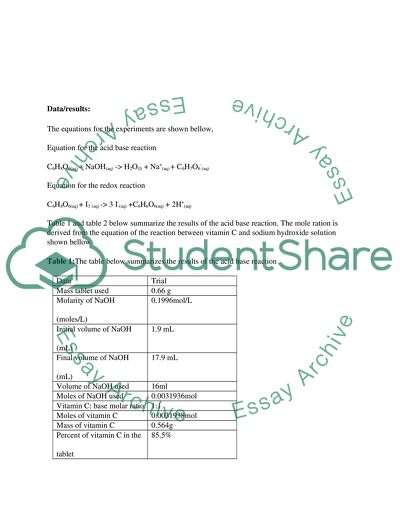Cite this document
(“Acid base and redox titration of vitamin C Lab Report”, n.d.)
Retrieved from https://studentshare.org/chemistry/1447925-acid-base-and-redox-titration-of-vitamin-c
Retrieved from https://studentshare.org/chemistry/1447925-acid-base-and-redox-titration-of-vitamin-c
(Acid Base and Redox Titration of Vitamin C Lab Report)
https://studentshare.org/chemistry/1447925-acid-base-and-redox-titration-of-vitamin-c.
https://studentshare.org/chemistry/1447925-acid-base-and-redox-titration-of-vitamin-c.
“Acid Base and Redox Titration of Vitamin C Lab Report”, n.d. https://studentshare.org/chemistry/1447925-acid-base-and-redox-titration-of-vitamin-c.


